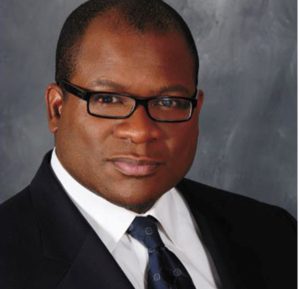
OUR AUDIENCE
- 170,000 readers, comprising metro Detroit’s affluent African-American community
- Annual buying power in excess of $1.7 billion
- 33% possess at least a four-year college degree
Publisher, The Michigan Chronicle
At a time when there are more media outlets than ever before, most of them electronic, and a time when many newspapers find themselves is jeopardy, the Black press continues to be of vital importance. That includes the Michigan Chronicle which is celebrating its 75th year. — Editors
In April 1936, John Sengstacke, the young nephew of Chicago Defender founder Robert Abbott, sent Lucius Harper, then executive editor of the Defender, to Detroit. Armed with $135 in capital — and a one-way bus ticket— Harper’s mission was to launch a Detroit-based sister paper.
The Defender had a Detroit edition — led by Russ Cowans — but people in Detroit wanted more local coverage. Subsequently, the Michigan Chronicle — then the Detroit Chronicle — was born. The first editor was Louis Martin, since Harper was needed back in Chicago. Martin, who had joined the Defender in 1934 and earned $15 a week, was given a $5 raise, $10 in cash and a one-way bus ticket to Detroit.
Sengstacke explained the whys and wherefores of the Chronicle’s birth in an article published for the paper’s 50th anniversary edition in 1986.
“The first issue of the Chronicle was 5000 (given away) copies, using newsboys to handle distribution. Lucius Harper turned over to Louis Martin a paid circulation of 900 per week and unpaid circulation of twice that much, and $17 in cash, the entire cash capital of the business.”
Sengstacke also wrote that the one room office at 1727 St. Antoine was next to “one of the most important and richest gamblers and numbers kings in Detroit,” and that other tenants included several lawyers, John Roxborough and Joe Louis.
“This atmosphere provided traffic that helped the Chronicle become known, for almost everybody of consequence, in and out of town, had to pass the Chronicle’s office.”
According to an article by Louis Martin, published July 17, 1976 and reprinted on Sept. 27, 1986, the Chronicle’s first theatrical editor, Rollo Vest (whom Martin admitted he “stole” from the Pittsburgh Courier) gave the world the name Paradise Valley. The name was needed for a mayoralty contest.
He also wrote that the publicity given that contest (Roy Lightfoot was the first “mayor” of Paradise Valley, by the way) gave the Chronicle its first nationwide exposure.
However, according to Martin, the most fundamental operation that assured the growth of the Chronicle centered around the labor movement.
“Fresh out of college with no experience, I was shocked to learn how tough a break Black workers got in the foundries of the auto plants and how insecure men felt about jobs in the factories,” Martin wrote. He added that a Black worker could be fired for voting “the wrong way” or for any trivial matter that offended his straw boss.
Talk about the CIO (Congress of Industrial Organizations) appealed to Martin’s sense of fair play, and he “jumped into the fight with both feet and the Michigan Chronicle.”
Martin wrote that the rank and file of the people rallied to the Chronicle, and by 1940, the paper had passed the 15,000 circulation mark. Four years later, it hit 25,000 for the first time.
The Chronicle also worked hand-in-hand with Closter Current, Dr. J.J. McClendon and other leaders of the NAACP, and was “the authentic voice of the most advanced and progressive leadership of the community.”
But the Chronicle didn’t only concern itself with areas of controversy. Martin wrote that the paper joined with Nellie Watts to organize the Patrons of the Arts. It also published a book of poems by then Chronicle staffer Robert Hayden, who had won the Avery Hopwood Award for Poetry while studying at the University of Michigan. Hayden’s book, “Heartshapes in the Dust,” was printed on a hand press in the Chronicle basement.
The Chronicle hit the big time in the mid-1940s, according to Martin. That’s when Longworth Quinn (who graduated from Hampton Institute with Sengstacke) moved from the Defender to the Chronicle. Quinn served as publisher for decades, and by 1986 was publisher emeritus. But he still came in daily, according to a Sept. 27, 1986 article by Danton Wilson.
Quinn, who came to the Chronicle in 1944, became a leader in the flourishing Black business community.
“He helped put on expositions and joined organizations (such as the Booker T. Washington Businessman’s Association) that sought to make organized business a positive contributor to the community,” Wilson wrote.
“I always thought that was vital,” said Quinn, who said he was reminded of its importance before he even got to the Chronicle. “And I decided to become very involved.”
Quinn’s other major commitment was to the Black church.
“More than any other institution, Quinn said, the Black church has been indispensable in the survival and flourishing of the Michigan Chronicle,” Wilson wrote.
Albert Dunmore, who served as managing editor from 1963 to 1968, was a freshman at Hampton when Sengstacke and Quinn were seniors. He wrote that he joined the staff of the Pittsburgh Courier during a time when the big three of Black journalism, the Defender, the Courier and the Baltimore Afro American, were reaching out for national circulation. The Afro American focused on the East Coast. The Defender concentrated on the Midwest — especially the Mississippi Valley — and played a major role in the migration of Blacks to northern cities.
The Defender and the Courier started up competing Detroit editions. According to Dunmore, they “went at each other with a vengeance.”
Hired to edit the Detroit edition of the Courier, Dunmore became familiar with the Chronicle, and took particular notice when Quinn took over the reins.
“From the first days of its existence, the Chronicle was watched closely because it was one of the first Black weeklies to develop an editorial policy in favor of the labor movement and the Democratic Party,” Dunmore wrote.
“Most Black weeklies had been Republican oriented and anti labor because of the anti-Black attitude prevalent in the organized labor ranks and the heavily southern influence in the Democratic party.”
Dunmore said this “radical” approach brought the Chronicle national attention.
In addition, Russ Cowans was a close associate of Joe Louis (the primary sports figure of the late 1940s and early 1950s), and his coverage of “the Brown Bomber” had the edge on other sports writers, giving the newspaper respect among the working press.
According to Dunmore, the Chronicle made strong inroads against its local competition, including the Courier, which still had a national focus. He wrote that the Chronicle had virtually taken over by the mid-1950s.
In time, the Chronicle, Defender, Courier and Tri-State Defender in Tennessee would all come to be owned by the Sengstacke Newspapers. A period of uncertainty followed Sengstacke’s death in 1997, but by 2003 the four papers (as well as the Michigan FrontPage) were purchased by Real Times, Inc.
The Chronicle has been recognized five times as best Black newspaper in the country by the National Newspaper Publishers Association.
Over the years, the Chronicle has seen many changes, but some things have remained constant. And no history of the Michigan Chronicle would be complete without mentioning one of those constants — Pauline Leatherwood. More often than not, it’s her voice you hear when you call. She has been with the paper since January 1954.
Interviewed in the 50th anniversary edition, Leatherwood said, “I was here for the 25th anniversary and never thought I’d be here for the 50th anniversary. The other day somebody said I’d probably be here for the 75th.”
They were right.


